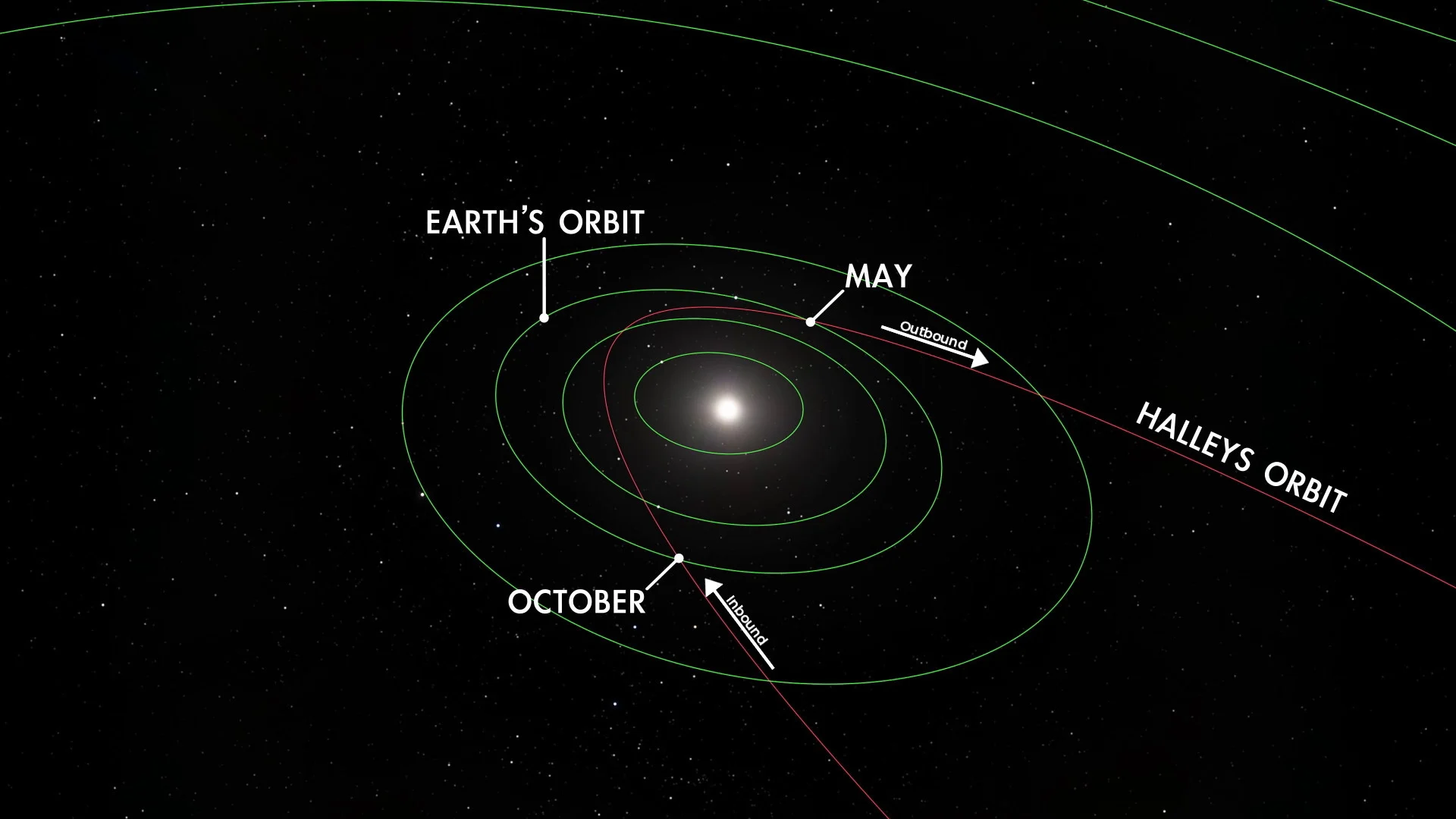Published on Oct. 18, 2025, 10:40 AM
Look up Monday night to see meteors from Halley’s Comet streaking through the sky above.
Even though Halley’s Comet won’t be returning to our skies until 2061, each year, we see two meteor showers to remind us that it’s out there, and one of those meteor showers is peaking Monday night!
Right now, Earth is passing through a trail of debris in space, left behind long ago by one of the most famous comets of all time — 1P/Halley. The tiny meteoroids contained in this debris stream consist of bits of rock and ice that blew off the comet during its periodic passes around the Sun. When Earth sweeps these meteoroids up, they produce bright flashes of light that streak through our night sky, resulting in two different meteor showers.
The first — the eta Aquariids — peaks in early May, and occurs due to Earth passing through the ‘outbound’ part of Halley’s trail.

Comet Halley’s path through the inner solar system, which it follows once every 76 years, is shown in this graphic, along with where Earth intercepts the comet’s debris stream, in both May and October, when the eta Aquariid and Orionid meteor showers peak, respectively. (NASA/Scott Sutherland)
DON’T MISS: Year’s best meteor showers come this fall, four display at once
The second, which is happening right now, comes from the ‘inbound’ part of Halley’s trail, and is called the Orionid meteor shower.
This meteor shower runs from October 2 through November 12, and for most nights during that time, it delivers only a few meteors every hour. Due to how fast the meteoroids are travelling when they plunge into Earth’s atmosphere (66 kilometers per second), some show up as exceptionally bright fireballs!
However, during the Orionids’ peak, which lasts from late on the night of October 20 through the predawn hours of October 21, we can see up to 20 meteors per hour. That’s an average of one every 3 minutes or so!

